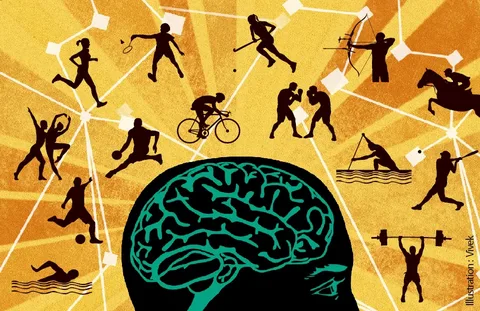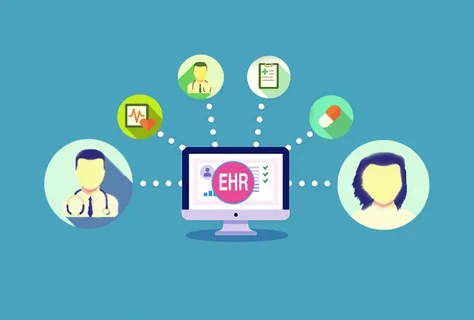In today’s fast-paced and ever-evolving world, the power of education cannot be underestimated. Education serves as a catalyst for personal growth, professional development, and societal progress. It equips individuals with the necessary knowledge, skills, and tools to navigate through life’s challenges and seize opportunities.
Education is not limited to traditional classroom settings anymore. With the advent of technology, learning has become more accessible and convenient than ever before. Online learning platforms have emerged as a valuable resource, offering a plethora of courses and educational materials tailored to individual needs and interests.
The importance of education goes beyond acquiring academic qualifications. It empowers individuals to think critically, solve problems, and make informed decisions. Education fosters creativity, curiosity, and a thirst for knowledge, enabling individuals to explore new ideas, innovate, and contribute to the betterment of society.
Moreover, education is a powerful tool for social and economic empowerment. It opens doors to new career opportunities, higher earning potential, and upward mobility. It helps bridge the gap between socioeconomic disparities, empowering individuals from all backgrounds to achieve their full potential.
In this blog post, we will delve into the world of learning platforms and explore some of the best options available. These platforms offer a wide range of courses, from academic subjects to practical skills, catering to learners of all ages and backgrounds. Whether you are a student looking to supplement your studies, a professional aiming to upskill or reskill, or an individual seeking personal growth, these platforms have something for everyone.
So, join us on this exciting journey as we unleash the power of education and discover the best learning platforms that can transform your learning experience and unlock new opportunities in your personal and professional life. Let’s embark on this educational odyssey together!
- Traditional vs. online learning: a brief comparison
When it comes to education, the options available today are more diverse than ever. Traditionally, people would attend physical institutions, such as schools or universities, to gain knowledge and skills. However, with the rise of technology and the internet, online learning has emerged as a popular alternative.
Traditional learning has its own advantages. It provides a structured environment where students can interact face-to-face with teachers and peers. This form of learning fosters social interaction, collaboration, and a sense of community. Furthermore, traditional learning often offers hands-on experiences, such as laboratory experiments or practical demonstrations, which can be invaluable in certain fields of study.
On the other hand, online learning offers flexibility and convenience that traditional learning cannot always provide. With online platforms, students have the freedom to learn at their own pace and according to their own schedule. They can access course materials and lectures from anywhere in the world, eliminating the barriers of time and location. Additionally, online learning often involves interactive multimedia elements, such as videos, quizzes, and simulations, which can enhance the learning experience and cater to different learning styles.
Both traditional and online learning have their merits, and the choice between the two depends on individual preferences and circumstances. Some students thrive in a traditional classroom setting, benefiting from the structure and face-to-face interaction. Others may prefer the flexibility and self-paced nature of online learning, especially if they have other commitments or prefer independent study.
It is worth noting that the line between traditional and online learning is not always clear-cut. Many educational institutions now offer blended learning approaches, combining elements of both traditional and online learning. This hybrid model allows students to enjoy the best of both worlds, taking advantage of in-person interactions while also benefiting from the flexibility and resources offered by online platforms.
Ultimately, the decision between traditional and online learning depends on various factors, such as personal learning style, career goals, and available resources. It is important to weigh the pros and cons of each approach and choose the learning platform that best suits your needs and preferences.
- Choosing the right learning platform: factors to consider
When it comes to choosing the right learning platform, there are several factors that you should consider. With the vast array of options available, it can be overwhelming to determine which platform will best suit your needs. However, by considering these important factors, you can make an informed decision that will maximize your learning experience.
First and foremost, you should assess the content offered by the learning platform. The platform should provide a comprehensive range of courses and subjects that align with your educational goals. Whether you are seeking to enhance your professional skills or pursue personal interests, the platform should offer a diverse selection of high-quality content.
Another crucial factor to consider is the teaching methodology employed by the platform. Look for a learning platform that utilizes effective and engaging instructional techniques. This could include interactive videos, quizzes, assignments, and other interactive elements that promote active learning. A platform that incorporates multimedia and interactive features can greatly enhance your understanding and retention of the material.
Furthermore, it is important to evaluate the reputation and credibility of the learning platform. Research the platform’s track record, user reviews, and the qualifications of its instructors. A reputable platform will have experienced and knowledgeable instructors who can provide valuable insights and guidance throughout your learning journey.
Additionally, consider the flexibility and accessibility offered by the learning platform. Does it allow you to learn at your own pace and on your own schedule? Can you access the content across different devices? These factors are particularly important for individuals with busy lifestyles or those who prefer a self-paced learning approach.
Lastly, take into account the cost and value offered by the learning platform. While some platforms may offer free or low-cost courses, others may require a subscription or payment for premium content. Evaluate the pricing structure and determine if the platform provides sufficient value for the investment. Look for platforms that offer a balance between affordability and quality.
By carefully considering these factors, you can choose the learning platform that best aligns with your educational goals, learning style, and preferences. Remember, the right learning platform can unleash the power of education and unlock new opportunities for growth and development.
- Top learning platforms for academic education
When it comes to academic education, there are several top learning platforms that have revolutionized the way students learn and acquire knowledge. These platforms offer a wide range of courses, resources, and interactive tools that cater to various subjects and learning styles.
One of the most popular learning platforms is Coursera. Known for its extensive collection of online courses from renowned universities and institutions, Coursera provides learners with the opportunity to explore subjects like computer science, business, humanities, and more. With features such as video lectures, quizzes, and assignments, students can engage in a structured learning experience and even earn certificates upon completion.
Another prominent platform is edX, which offers courses from leading universities like Harvard and MIT. With a focus on high-quality education, edX provides learners with access to a diverse range of subjects including engineering, science, arts, and languages. The platform emphasizes interactive learning through discussion forums, virtual labs, and practical assignments.
For those interested in technical skills and programming, Udemy is a go-to platform. With thousands of courses on topics like web development, data science, graphic design, and more, Udemy allows learners to enhance their skills at their own pace. The platform also offers a variety of free and paid courses, making it accessible to learners with varying budgets.
Khan Academy is another notable learning platform, known for its vast library of educational videos and exercises. With a focus on K-12 education, Khan Academy offers resources in subjects such as math, science, history, and economics. The platform’s user-friendly interface and personalized learning features make it a valuable tool for students of all ages.
Lastly, FutureLearn is a platform that collaborates with top universities and organizations to provide learners with high-quality courses in various disciplines. With a strong emphasis on social learning, FutureLearn offers a supportive community where students can engage in discussions and collaborative exercises. The platform also offers flexible learning options, allowing learners to study at their own pace.
These top learning platforms have transformed the landscape of academic education, offering learners the opportunity to access quality courses and resources from the comfort of their homes. Whether you’re looking to enhance your skills, explore new subjects, or earn academic credentials, these platforms provide the tools and resources to unleash the power of education.
a. Platform 1: Features, strengths, and weaknesses
When it comes to exploring the best learning platforms, Platform 1 stands out for its impressive range of features. Designed to cater to a wide variety of learners, it offers a comprehensive set of tools and resources to support effective education.
One of the notable strengths of Platform 1 is its user-friendly interface and intuitive navigation system. Whether you are a tech-savvy individual or a beginner, you will find it easy to navigate through the platform and access the desired learning materials. This ensures a seamless learning experience for users of all levels.
Another key strength of Platform 1 is its extensive library of courses and educational content. With a diverse range of subjects and topics, learners have the opportunity to explore and enhance their knowledge in various areas. The platform also offers interactive features such as quizzes, assessments, and discussion boards, enabling learners to engage actively with the content and collaborate with other users.
However, like any platform, Platform 1 does have some weaknesses to consider. One area that could be improved is the responsiveness of customer support. While the platform offers support channels, response times may vary, and some users have reported delays in getting their queries resolved. Additionally, in terms of pricing, Platform 1 falls on the higher end of the spectrum, which may be a deterrent for budget-conscious learners.
Overall, Platform 1’s robust features, user-friendly interface, and extensive course library make it a compelling choice for those seeking an enriching learning experience. However, it is important to weigh the strengths against the weaknesses to determine if it aligns with your specific needs and budget.
b. Platform 2: Features, strengths, and weaknesses
Platform 2 offers a robust set of features that cater to diverse learning needs. With its user-friendly interface and intuitive navigation, it allows learners to easily navigate through the available courses and resources. The platform boasts a wide range of courses, covering various subjects and skill sets, ensuring that learners have ample options to choose from.
One of the strengths of Platform 2 is its interactive learning experience. It integrates engaging multimedia elements, such as videos, quizzes, and interactive exercises, to create an immersive and dynamic learning environment. Learners can actively participate in discussions, collaborate with peers, and receive personalized feedback from instructors, enhancing their overall learning experience.
Furthermore, Platform 2 offers flexible learning options, allowing users to learn at their own pace and convenience. Whether it’s through self-paced courses or live virtual classrooms, learners can customize their learning journey to fit their schedule and preferences. This flexibility is particularly beneficial for working professionals or individuals with busy lifestyles.
However, like any platform, Platform 2 also has its weaknesses. Some users have reported occasional technical glitches, such as slow loading times or difficulties accessing certain features. While these issues may be minor and sporadic, they can still be frustrating for learners who rely on the platform for uninterrupted learning.
Another weakness of Platform 2 is its limited course offerings in certain niche subjects. While it covers a wide range of topics, there may be specific subjects or specialized fields that are not adequately represented. This could be a drawback for learners seeking in-depth knowledge in niche areas.
Despite these weaknesses, Platform 2 remains a popular choice for learners due to its user-friendly interface, interactive learning experience, and flexible options. By leveraging its strengths and addressing its weaknesses, it continues to empower individuals with the knowledge and skills they need to thrive in today’s competitive world.
c. Platform 3: Features, strengths, and weaknesses
Platform 3 is a robust learning platform that offers a wide range of features to enhance the learning experience. One of its key strengths is its extensive library of courses spanning various subjects and disciplines. From business and technology to arts and humanities, Platform 3 has a diverse collection of courses catered to different interests and skill levels.
Another notable feature of Platform 3 is its interactive learning tools. The platform utilizes engaging multimedia content, interactive quizzes, and discussion forums to foster a dynamic and collaborative learning environment. This not only enhances knowledge retention but also encourages active participation and knowledge sharing among learners.
Platform 3 also boasts a user-friendly interface, making it easy for learners to navigate and access course materials. The platform provides clear instructions and intuitive design, ensuring that learners can easily engage with the content without feeling overwhelmed or confused.
However, like any learning platform, Platform 3 does have its weaknesses. One area of improvement could be the availability of advanced courses or specialized programs. While the platform offers a wide range of courses, learners looking for more advanced or niche subjects may find limited options.
Additionally, some users have reported occasional technical glitches or slow loading times, which can be frustrating for learners trying to access their courses or complete assignments. While these issues are not pervasive, they are worth considering when evaluating the overall user experience.
In conclusion, Platform 3 offers a comprehensive learning experience with its extensive course library, interactive learning tools, and user-friendly interface. While it may have some minor weaknesses, its strengths make it a valuable platform for individuals seeking to expand their knowledge and skills in various fields.
5. Top learning platforms for professional development
When it comes to professional development, having access to the right learning platforms can make a world of difference. These platforms provide a wealth of knowledge and resources that can help individuals enhance their skills, stay up-to-date with industry trends, and unlock new opportunities in their careers.
One of the top learning platforms for professional development is LinkedIn Learning. With a vast library of courses taught by industry experts, professionals can explore a wide range of topics and acquire new skills in areas such as leadership, digital marketing, data analysis, and more. LinkedIn Learning also offers personalized recommendations based on individual interests and career goals, making it a valuable tool for professionals at all stages of their careers.
Another popular learning platform is Udemy. Known for its extensive collection of online courses, Udemy offers a wide array of options for professional development. From technical skills like programming and web development to soft skills like communication and leadership, Udemy covers a broad spectrum of subjects. What sets Udemy apart is its affordability and flexibility, allowing learners to access courses at their own pace and on their own schedule.
For professionals looking for more structured and comprehensive learning experiences, Coursera is an excellent choice. Partnering with top universities and organizations, Coursera offers courses, specializations, and even online degree programs in various fields. Learners can earn certificates and degrees that are recognized by employers, helping them stand out in the job market and take their careers to new heights.
Pluralsight is another prominent learning platform that focuses on technology and IT skills. With a vast library of courses, assessments, and hands-on learning experiences, Pluralsight caters specifically to individuals seeking to enhance their technical expertise. From software development and cybersecurity to cloud computing and machine learning, Pluralsight covers a wide range of in-demand skills in the tech industry.
No discussion about learning platforms would be complete without mentioning Khan Academy. While initially aimed at providing free educational resources for K-12 students, Khan Academy has expanded its offerings to include courses for adult learners as well. With a strong emphasis on math, science, and computer programming, Khan Academy offers a valuable learning platform for professionals who want to sharpen their analytical and problem–solving skills.
Whether you are looking to advance in your current career, explore new fields, or simply stay ahead of the curve, these top learning platforms for professional development can provide the knowledge and skills you need to succeed. With their diverse course offerings, flexibility, and expert instructors, these platforms empower individuals to unleash their full potential and embark on a lifelong journey of learning and growth.
a. Platform 1: Features, strengths, and weaknesses
When it comes to exploring the best learning platforms, Platform 1 stands out for its unique features, strengths, and weaknesses.
One of the key features of Platform 1 is its extensive library of courses covering a wide range of subjects. From business and technology to arts and humanities, Platform 1 offers a diverse array of educational content that caters to various interests and skill levels. The platform also provides interactive learning materials, such as videos, quizzes, and assignments, to enhance the learning experience.
One of the major strengths of Platform 1 is its user-friendly interface. The platform is designed to be intuitive and easy to navigate, making it accessible for learners of all ages and technical abilities. Additionally, Platform 1 offers a seamless mobile experience, allowing users to access their courses and learning materials on the go.
Another notable strength of Platform 1 is its community aspect. Learners have the opportunity to connect with other like-minded individuals, join discussion forums, and collaborate on projects. This creates a supportive learning environment where students can share knowledge, exchange ideas, and learn from one another.
However, like any learning platform, Platform 1 does have its weaknesses. One of the common concerns raised by users is the limited instructor support. While the platform provides comprehensive course materials, some learners may find it challenging to receive timely guidance or clarification on specific topics. Additionally, as Platform 1 offers a vast range of courses, the quality and consistency of instruction may vary across different subjects.
In conclusion, Platform 1 offers a rich selection of courses, a user-friendly interface, and a supportive learning community. However, it may have limitations in terms of instructor support and course quality consistency. By understanding its features, strengths, and weaknesses, learners can make informed decisions about whether Platform 1 aligns with their educational goals and preferences.
b. Platform 2: Features, strengths, and weaknesses
When it comes to exploring the best learning platforms, Platform 2 holds its ground with a range of impressive features. One notable feature is its extensive library of educational content, covering a wide array of subjects and disciplines. Whether you’re interested in brushing up on your coding skills, learning a new language, or mastering graphic design, Platform 2 offers a diverse range of courses to cater to your learning needs.
One of the strengths of Platform 2 is its user-friendly interface, making it accessible and easy to navigate for learners of all levels. The platform offers a seamless learning experience, with intuitive features such as progress tracking, interactive quizzes, and video tutorials to enhance engagement and knowledge retention. Additionally, Platform 2 provides a personalized learning experience, allowing users to set their own pace and tailor their learning journey according to their individual preferences and goals.
However, like any learning platform, Platform 2 also has its weaknesses. One potential drawback is the limited availability of instructor-led courses. While it excels in providing self-paced learning resources, learners who prefer direct interaction with instructors may find themselves wanting more options for live classes or one-on-one guidance.
Another potential weakness of Platform 2 is its pricing structure. While it offers a range of free courses, access to premium content often requires a subscription or purchase. This can be a deterrent for budget-conscious learners who may be seeking more affordable or cost-effective learning options.
Overall, Platform 2 offers a robust learning experience with its extensive content library, user-friendly interface, and personalized learning features. However, it is important for prospective learners to consider their preferred learning style and budget before committing to this platform. By weighing the strengths and weaknesses, individuals can make an informed decision about whether Platform 2 aligns with their educational goals and needs.
c. Platform 3: Features, strengths, and weaknesses
When it comes to exploring the best learning platforms, it is essential to consider the features, strengths, and weaknesses of each platform. Platform 3, let’s call it “LearnPro,” is a remarkable contender in the world of online education.
One of the standout features of LearnPro is its extensive course library. With a vast range of subjects and topics, learners have access to a wealth of knowledge at their fingertips. From technical skills like coding and web development to creative pursuits like graphic design and photography, LearnPro covers a wide spectrum of interests. This diverse course selection ensures that learners can find something tailored to their specific needs and interests.
Additionally, LearnPro stands out with its interactive and engaging learning experience. The platform incorporates multimedia elements, such as videos, quizzes, and interactive exercises, to enhance the learning process. This not only keeps learners motivated and focused but also facilitates better retention and understanding of the material.
Another strength of LearnPro lies in its user-friendly interface. Navigating through the platform is intuitive, making it easy for learners to find and access their desired courses. The clean and organized layout ensures a seamless learning experience, eliminating any unnecessary hurdles that might hinder progress.
However, like any learning platform, LearnPro has its weaknesses. One area that could be improved is the limited availability of live instructor support. While the platform does provide forums and discussion boards for learners to interact with each other, having direct access to instructors in real-time could enhance the learning experience, especially for those who require additional guidance or clarification.
Furthermore, LearnPro’s pricing structure might not be suitable for everyone. While it offers a range of subscription plans, some learners might find the cost to be on the higher side, especially if they are on a tight budget. Exploring alternative pricing options or offering more flexible payment plans could make the platform more accessible to a broader audience.
In conclusion, LearnPro stands out with its extensive course library, interactive learning experience, and user-friendly interface. However, it could benefit from improving live instructor support and exploring more flexible pricing options. By considering these features, strengths, and weaknesses, learners can make an informed decision when choosing the best learning platform for their educational journey.
- Specialized learning platforms for specific skills or interests
In today’s fast-paced and ever-evolving world, learning has become more accessible than ever before. With the rise of specialized learning platforms, individuals can now explore and develop their skills and interests in a focused and efficient manner.
Whether you are passionate about photography, coding, cooking, or even underwater basket weaving, there is a learning platform tailored to your specific needs. These platforms offer a wide range of courses, tutorials, and resources, curated by experts in their respective fields.
For instance, if you aspire to become a professional photographer, platforms like “Photography Masterclass” or “CreativeLive” provide comprehensive courses that cover everything from technical aspects of camera settings to composition and editing techniques. These platforms often include interactive features such as forums and feedback from instructors, fostering a supportive learning community.
Similarly, if you are interested in honing your coding skills, websites like “Codecademy” and “Udacity” offer a variety of courses and projects for different programming languages. These platforms not only provide step-by-step tutorials but also encourage hands-on coding practice to reinforce your understanding.
Moreover, specialized learning platforms cater to niche interests as well. Perhaps you have a passion for sustainable gardening or want to learn about ancient civilizations. Platforms like “Gardening Know How” or “Coursera” offer courses and educational materials specifically designed for these topics, allowing you to delve deep into your chosen area of interest.
The beauty of these specialized platforms lies in their ability to provide focused and relevant content. Unlike traditional education systems, which often offer a broad spectrum of subjects, these platforms allow learners to dive into specific skills or interests that align with their personal goals.
By utilizing these specialized learning platforms, individuals can unlock their full potential and pursue their passions with confidence. Whether you are a lifelong learner or seeking to acquire new skills for personal or professional growth, these platforms present a world of opportunities at your fingertips. So, why wait? Explore the vast landscape of specialized learning platforms and unleash the power of education today.
a. Platform 1: Features, strengths, and weaknesses
When it comes to exploring the best learning platforms, it’s essential to analyze each platform’s features, strengths, and weaknesses to determine which one suits your educational needs the most.
Platform 1 offers a wide range of features that make it a compelling choice for learners. One of its notable strengths is its user-friendly interface, which simplifies the learning experience and ensures that users can navigate through the platform effortlessly. The platform also provides a diverse selection of courses, covering various subjects and skill levels, catering to both beginners and advanced learners.
Another strength of Platform 1 lies in its interactive learning tools. These tools enhance the learning process by incorporating multimedia elements such as videos, quizzes, and interactive exercises, making the educational journey engaging and enjoyable. Additionally, the platform offers a robust community feature where learners can connect with peers, ask questions, and participate in discussions, fostering a collaborative learning environment.
However, like any learning platform, Platform 1 also has its weaknesses. One area where it falls short is the limited availability of courses in niche subjects. While it covers a broad spectrum of topics, learners seeking specialized knowledge in more obscure areas may find the platform lacking in options. Additionally, some users have reported occasional technical issues, such as slow loading times or glitches, which can hinder the learning experience.
Despite these weaknesses, Platform 1 remains a top contender due to its user-friendly interface, diverse course selection, interactive learning tools, and vibrant community. By considering your specific educational goals and weighing the strengths and weaknesses of each platform, you can make an informed decision on which learning platform to unleash the power of education with.
b. Platform 2: Features, strengths, and weaknesses
When it comes to exploring the best learning platforms, Platform 2 stands out with its unique set of features, strengths, and weaknesses.
One of the key strengths of Platform 2 is its user-friendly interface. It offers a seamless and intuitive experience for learners, making it easy to navigate through the various courses and modules. Whether you are a beginner or an advanced learner, Platform 2 caters to all levels of expertise, ensuring that everyone can benefit from its educational offerings.
Another notable feature of Platform 2 is its vast library of courses. It covers a wide range of subjects and disciplines, providing learners with a diverse selection to choose from. Whether you’re interested in technology, business, arts, or any other field, Platform 2 has something for everyone.
Furthermore, Platform 2 incorporates interactive learning tools to enhance the educational experience. From quizzes and assessments to discussion forums and virtual simulations, learners can actively engage with the content and reinforce their understanding. This interactive approach fosters a deeper level of comprehension and retention of knowledge.
Despite its strengths, Platform 2 does have a few weaknesses worth mentioning. One area of improvement is the lack of personalized learning paths. While the platform offers a wide range of courses, it doesn’t provide tailored recommendations based on individual learning goals and preferences. This could potentially limit the customization and adaptability of the learning experience.
Additionally, some users have reported occasional technical glitches and slow loading times on Platform 2. While these issues are relatively minor and infrequent, they can still disrupt the learning flow and cause frustration for learners who rely on consistent and uninterrupted access to course materials.
In conclusion, Platform 2 offers a user-friendly interface, a vast library of courses, and interactive learning tools. However, it could benefit from implementing personalized learning paths and addressing occasional technical issues. By considering these features, strengths, and weaknesses, learners can make an informed decision on whether Platform 2 aligns with their educational needs and preferences.
c. Platform 3: Features, strengths, and weaknesses
Platform 3 offers a unique set of features that sets it apart from the rest. With a user-friendly interface and intuitive navigation, it ensures a seamless learning experience for both educators and learners. The platform boasts a wide range of interactive tools and multimedia resources that cater to different learning styles, making learning engaging and dynamic.
One of the standout strengths of Platform 3 is its robust assessment and tracking system. It allows educators to easily create and administer quizzes, assignments, and exams, providing valuable insights into students’ progress and performance. The detailed analytics and reporting features enable educators to identify areas where students may be struggling and tailor their teaching accordingly.
Another notable strength of Platform 3 is its extensive library of educational content. From textbooks and e-books to videos and interactive simulations, the platform offers a vast repository of resources across various subjects and disciplines. This ensures that learners have access to diverse learning materials to enhance their understanding and knowledge.
However, like any other learning platform, Platform 3 does have its weaknesses. One area for improvement is the limited availability of real-time collaboration features. While the platform does offer discussion boards and forums, it lacks the ability for students and educators to collaborate synchronously in real-time. This can hinder certain group learning activities or live discussions, which may be essential in certain educational contexts.
Additionally, some users have reported occasional technical glitches and slow loading times, which can be frustrating for both educators and learners. While these issues may not be persistent or widespread, it is worth considering before fully committing to Platform 3.
Overall, Platform 3 offers a range of valuable features and resources for an enriched learning experience. Its robust assessment system and extensive content library make it a compelling choice for educators and learners alike. However, its limited real-time collaboration features and occasional technical issues should be taken into account when evaluating its suitability for specific educational needs.
- Factors to consider when choosing a learning platform
When it comes to choosing a learning platform like Mypascoconnect , there are several factors to consider that can greatly impact the quality and effectiveness of your learning experience. Here are some key considerations to keep in mind:
1. Content and Course Selection: The first and foremost factor to consider is the availability and quality of the content and courses offered on the platform. Is the platform well-rounded, offering a wide range of subjects and topics? Does it provide courses that suit your specific learning needs and interests? Assessing the platform’s content offerings is crucial in ensuring that it aligns with your educational goals.
2. Learning Methods and Interactivity: Different platforms employ various teaching methods and approaches. Some platforms may focus on video lectures, while others may provide interactive quizzes, discussion forums, or even live classes. Consider your preferred learning style and choose a platform that offers the methods that resonate with you the most. Additionally, look for platforms that encourage active engagement and interaction among learners, as this can greatly enhance the learning experience.
3. Instructor Qualifications and Expertise: The expertise and qualifications of the instructors on the learning platform play a vital role in the quality of education you will receive. Take the time to research the credentials and backgrounds of the instructors to ensure they have the necessary expertise and experience in their respective fields. Reading reviews or testimonials from previous learners can also provide insights into the quality of instruction provided.
4. Accessibility and User-Friendliness: Ease of use and accessibility are crucial factors to consider, especially if you prefer a self-paced learning environment. Look for platforms that have intuitive interfaces, easy navigation, and mobile compatibility, allowing you to learn at your own convenience, anytime and anywhere.
5. Support and Community: A strong support system and an engaged learning community can greatly enhance your learning journey. Look for platforms that offer support services, such as customer service or technical assistance, to address any concerns or issues that may arise. Additionally, platforms that foster a sense of community through discussion forums, peer interaction, or networking opportunities can provide a valuable support network for your educational pursuits.
By carefully considering these factors, you can make an informed decision when choosing a learning platform that best suits your individual learning needs and preferences. Remember, the right platform can unleash the power of education and take your learning experience to new heights.
a. Cost and pricing model
When it comes to exploring the best learning platforms, one crucial aspect to consider is the cost and pricing model. As a learner, it’s essential to assess the financial investment required and the value you can expect in return.
Different learning platforms employ various pricing structures, and understanding them can help you make an informed decision. Some platforms offer free courses or have a freemium model, where basic access is free, but additional features or advanced courses come at a cost.
On the other hand, some platforms follow a subscription-based model, offering unlimited access to their entire course catalog for a monthly or annual fee. This can be an attractive option for learners who want to explore multiple subjects or develop their skills across various domains.
Another pricing model commonly found is the pay-per-course model, where learners pay for individual courses they are interested in. This can be advantageous for those who prefer a more focused learning experience or want to try out specific courses without committing to a long-term subscription.
Moreover, some learning platforms offer certifications or professional programs that may come with a higher price tag. While these programs may require a more significant investment, they often provide a recognized credential that can enhance your career prospects.
When evaluating the cost and pricing model, it’s crucial to consider your budget, learning goals, and the value you perceive in the platform’s offerings. Take into account factors such as the quality of content, instructor expertise, interactive features, and learner support provided.
Ultimately, the best learning platform for you will be the one that aligns with your needs, offers a fair pricing structure, and provides a valuable learning experience. So, take the time to explore and compare different platforms to make an informed decision that unleashes the power of education for you.
b. Course variety and quality
When it comes to choosing a learning platform, course variety and quality are two crucial factors that can greatly impact your educational journey. The best learning platforms understand the importance of offering a wide range of courses to cater to diverse learning needs and interests.
Course variety plays a significant role in ensuring that learners have access to a plethora of subjects and topics. Whether you are looking to enhance your professional skills, delve into a new hobby, or pursue personal growth, a platform with a diverse course catalog enables you to explore and choose the subjects that align with your goals.
However, course variety alone is not enough. The quality of the courses offered is equally important. A high-quality course is one that is well-structured, comprehensive, and taught by knowledgeable instructors. It should provide engaging and interactive learning experiences, incorporating various multimedia elements such as videos, quizzes, and assignments.
The best learning platforms prioritize quality by partnering with reputable educators, experts, and industry professionals to develop their courses. They ensure that the content is up-to-date, relevant, and aligned with industry standards. Additionally, these platforms often provide user reviews and ratings, giving learners insights into the course’s effectiveness and value.
In your search for the best learning platform, keep an eye out for platforms that strike the right balance between course variety and quality. A platform that offers a wide range of courses with high standards of quality will empower you to unleash the power of education and achieve your learning goals effectively.
c. Instructor expertise and credentials
When it comes to choosing the best learning platform for your educational journey, one crucial factor to consider is the expertise and credentials of the instructors. After all, the knowledge and guidance provided by the instructors play a vital role in shaping your learning experience and overall success.
A top-notch learning platform will prioritize hiring instructors who are experts in their respective fields. These instructors should possess not only a deep understanding of the subject matter but also real-world experience that brings relevance and practicality to the lessons. Look for platforms that thoroughly vet their instructors, ensuring they have the necessary qualifications, certifications, and professional achievements.
An instructor’s credentials can serve as a testament to their expertise and commitment to their craft. Consider looking for instructors who hold advanced degrees, industry-specific certifications, or have a significant track record of accomplishments in their field. This information is often readily available on the learning platform’s website or instructor profiles.
Moreover, it’s beneficial to explore instructors’ backgrounds beyond just their credentials. Look for instructors who have demonstrated a passion for teaching and a genuine desire to help their students succeed. This can be reflected in their teaching philosophy, testimonials from previous students, or any additional support they provide such as office hours or discussion forums.
By choosing a learning platform that values instructor expertise and credentials, you can be confident that you’re gaining knowledge and insights from highly qualified professionals. This will enhance your learning experience, increase your engagement, and ultimately empower you to achieve your educational goals.
d. Interactive features and engagement
In today’s digital age, education has transcended traditional boundaries and has become more accessible than ever before. With the advent of online learning platforms, students can now engage with educational materials and resources in a more interactive and immersive manner.
One of the key factors to consider when exploring the best learning platforms is the presence of interactive features and engagement tools. These features not only enhance the learning experience but also foster student engagement and participation.
Interactive features can include multimedia elements such as videos, audio recordings, and interactive quizzes. These tools provide students with a dynamic learning environment, allowing them to grasp complex concepts more effectively. Visual aids and interactive simulations can also be incorporated, enabling students to visualize abstract ideas and apply their knowledge in practical scenarios.
Furthermore, engagement tools play a crucial role in keeping students motivated and involved in the learning process. Discussion forums, chat rooms, and virtual classrooms provide opportunities for students to interact with their peers and instructors, facilitating collaborative learning. Real-time feedback and assessment tools allow students to track their progress and identify areas that require further improvement.
The best learning platforms go beyond the traditional one-way delivery of information. They harness the power of interactive features and engagement tools to create an immersive and engaging learning experience. By incorporating these elements, students are more likely to stay motivated, retain information, and apply their knowledge effectively, ultimately unlocking their full potential in the realm of education.
e. User reviews and ratings
User reviews and ratings play a crucial role in helping individuals make informed decisions when it comes to choosing the best learning platforms. With so many options available in the online education landscape, it can be overwhelming to determine which
platforms truly deliver on their promises of quality education and effective learning experiences.
Reading user reviews allows prospective learners to gain valuable insights into the strengths and weaknesses of different platforms. These reviews provide real-life experiences and perspectives from individuals who have already used the platform. They can highlight the platform‘s user-friendliness, course content, instructor quality, customer support, and overall learning experience.
One of the key benefits of user reviews is the authenticity they bring to the table. Unlike promotional materials or marketing campaigns, user reviews are unbiased and reflect the genuine opinions and experiences of learners. This transparency helps potential learners get a comprehensive understanding of what they can expect from a particular learning platform.
Additionally, user ratings offer a quick snapshot of the overall satisfaction level of learners. Platforms with consistently high ratings indicate that they have been successful in meeting the needs and expectations of their users. Conversely, platforms with lower ratings might raise red flags and prompt further investigation before committing to a particular learning platform.
When exploring user reviews and ratings, it’s important to consider the credibility of the sources. Reputed review platforms or trusted educational communities often provide a reliable space for users to share their experiences. Engaging in discussions and forums related to online learning can also provide valuable insights and recommendations.
By leveraging user reviews and ratings, individuals can make more informed decisions about the learning platforms that align with their goals and preferences. This empowers learners to choose educational experiences that not only provide valuable knowledge but also deliver a seamless and rewarding learning journey.
- Tips for maximizing your learning experience on online platforms
When it comes to online learning platforms, there are a plethora of options available to suit various learning styles and goals. However, simply signing up for a course isn’t enough to guarantee a fruitful learning experience. To truly maximize your learning experience on online platforms, here are some valuable tips to consider.
Firstly, set clear goals and objectives for what you want to achieve through the course or platform. Whether you want to gain new skills, enhance your knowledge in a specific field, or simply broaden your horizons, having a clear vision will help you stay focused and motivated throughout the learning journey.
Next, take advantage of the interactive features provided by the platform. Engage in discussions with fellow learners, participate in forums, and ask questions. Learning is often enhanced by collaboration and the exchange of ideas, so don’t hesitate to reach out and connect with others who share your interests.
Additionally, make use of the various multimedia resources available. Many online platforms offer a combination of video lectures, interactive quizzes, written materials, and even live webinars. Take advantage of these diverse resources to cater to your preferred learning style and make the most of the content provided.
Another tip is to create a study schedule and stick to it. While online learning offers flexibility, it’s important to establish a routine to ensure consistent progress. Set aside dedicated time for studying, complete assignments within deadlines, and maintain a disciplined approach to your learning.
Furthermore, actively seek feedback from instructors or mentors if the platform provides such opportunities. Their expertise can help guide your learning journey and provide valuable insights and suggestions for improvement.
Lastly, embrace a growth mindset and be open to continuous learning. Online platforms offer access to a wealth of knowledge, but it’s up to you to make the most of it. Embrace challenges, persevere through difficult concepts, and push yourself beyond your comfort zone. Remember, the learning journey is a lifelong process, and online platforms can serve as powerful tools to unlock your potential.
By following these tips, you can unlock the true potential of online learning platforms and make the most of the educational opportunities they provide. So, dive in, explore, and embark on a transformative learning journey that will empower you to achieve your goals and unleash your true potential.
Conclusion: The power of education at your fingertips
In conclusion, the power of education is now more accessible than ever before, thanks to the multitude of learning platforms available at our fingertips. Whether you are looking to acquire new skills, enhance your knowledge, or explore new subjects, these platforms provide a wealth of opportunities for personal and professional growth.
We have explored some of the best learning platforms in this blog post, each offering unique features and benefits. From online courses and interactive tutorials to virtual classrooms and comprehensive learning resources, these platforms cater to diverse learning styles and preferences.
By taking advantage of these platforms, you can learn at your own pace, in your own time, and from the comfort of your own home. The flexibility and convenience they offer make education accessible to individuals from all walks of life, regardless of geographical location or time constraints.
Moreover, the interactive nature of these platforms fosters engagement and collaboration, allowing learners to connect with experts and fellow learners from around the world. This creates a dynamic learning environment that encourages discussion, sharing of ideas, and continuous improvement.
In this rapidly evolving digital age, it is crucial to embrace lifelong learning and stay abreast of industry trends and advancements. The power of education lies in its ability to empower individuals, broaden horizons, and open doors to new opportunities.
So, whether you aspire to gain a new qualification, advance in your career, or simply satisfy your curiosity, harness the power of education by exploring the best learning platforms available to you. Unlock your potential, expand your knowledge, and embark on a journey of lifelong learning. The possibilities are endless, and the power is in your hands.











